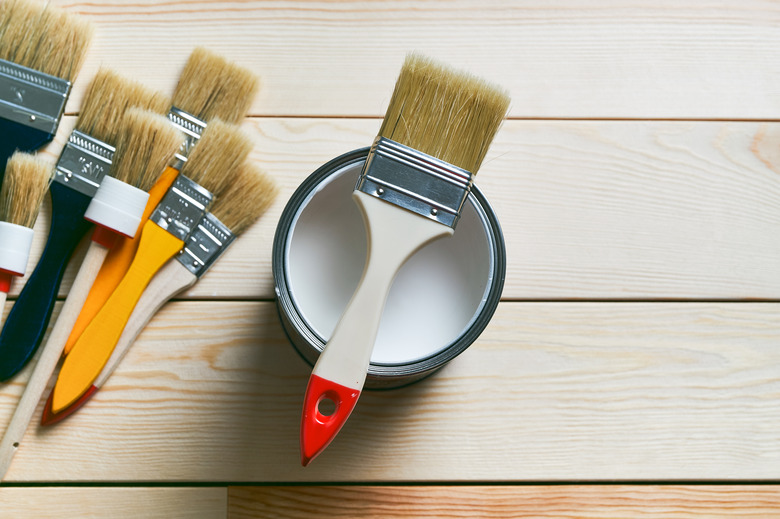Foam Brush Vs. Bristle Brush
We may receive a commission on purchases made from links.
When applying paint or a clear sealant to your new favorite project, brush type makes a difference that could affect the end result. While both foam and bristle brushes might work well for a small project, such as coating a DIY wood side table, bristle brushes are almost always the better choice for large projects or if you want to save the brush and use it again. Foam brushes fall apart far more easily, so they're best for one-off paint projects.
Bristle Brush Pros and Cons
Bristle Brush Pros and Cons
Bristle brushes come in handy for applying virtually any type of paint, stain, or sealer. Even so, it's helpful to use the right bristle brush for the job to ensure quality results. Brushes with synthetic bristles are the better choice for water-based products, such as latex paints, and for painting rough surfaces. Natural bristles tend to absorb the moisture from water-based paints, making them less effective at painting a smooth finish.
Use a natural-bristle brush to apply oil-based products to smooth surfaces only; rough, textured surfaces tend to snap the tips off natural bristles, which means the brush won't paint as evenly the next time you use it. Both types of bristle brushes tend to apply paint more evenly than a foam brush, but the bristles sometimes leave brush marks on some surfaces. Natural bristles in particular sometimes shed a bristle or two onto the painted surface, but it's easy enough to pick off the bristle and smooth over the finish.
Foam Brush Pros and Cons
Foam Brush Pros and Cons
Foam brushes are generally less expensive than bristle brushes, but they also don't last as long, even when using them with care. They're good for quick, relatively small paint and stain projects; you wouldn't use one to paint the side of a house, for instance. Painting the straight edges of a small project piece, such as a tabletop, is easy with a foam brush, and it leaves no brush strokes. Foam brushes aren't a good choice for applying clear, somewhat thick finishes, such as polyurethane, as the foam may introduce bubbles into the finish.
The more you apply thick finishes with the same brush during the course of a project, the more the foam absorbs the liquid, making the brush head soggy and sloppy. When this happens, the brush leaves edge marks in the finish, or it may apply too thick a coating. Some solvent-containing finishes could cause the foam to break down while you use them, and extremely old foam brushes are prone to disintegrating on their own. If you clean and reuse a foam brush multiple times, the foam eventually bends enough that it cracks and falls apart.
